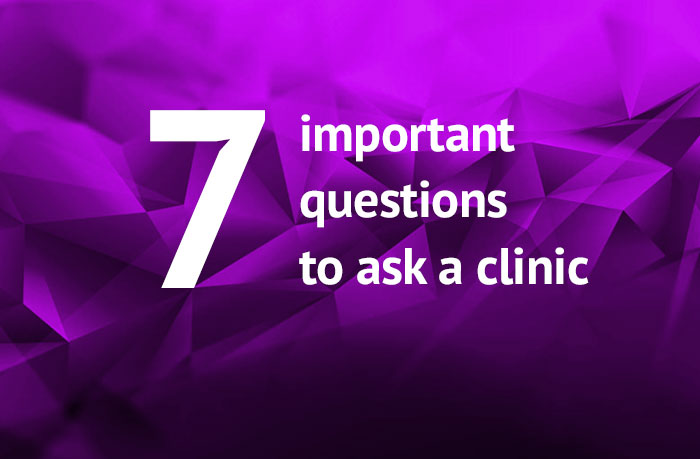What is Embryo Transfer?
Embryo Transfer is the final step in any fertility cycle, before finding out if you are pregnant or not. It is the culmination of months of preparation and drugs, hopes and dreams, it is the last thing you need to do before the treatment cycle comes to an end and you find out whether you have been successful.
Embryo transfer is not usually a difficult physical process, but the mental strain is phenomenal.
So it can be a highly pressurised and stressful time.
There are things that we, as patients can do. Both to prepare for transfer and afterwards, to give it the best chance possible and maintain good mental health throughout. It’s important to know what is going to happen and how we can be in prime condition to receive the embryo back. The clinic will do their part to give it the best chance of being successful and if we can help this along, then we will know that we did everything in our power.
By whatever method you have arrived at this point, embryo transfer is generally a straightforward and universal procedure. There are two types of embryo transfer – these are Fresh or Frozen. We’ll come onto the difference between the two later, but for now, we will concentrate on the procedure itself.
Embryo transfer procedure
You may be asked to arrive early to the clinic. Unless there are specific issues, you are unlikely to need to be sedated – embryo transfer is usually done with you being awake. You will probably need to arrive with a full bladder, this is to help the consultant use Ultrasound Guidance, to make sure the embryo is placed back into exactly the right spot. You will remove all clothing and wear a hospital gown; you will then be taken to the room they will be using to do the embryo transfer and settled onto the bed in the right position for the consultant.
The clinic will prepare the embryo and load it into a very thin catheter (a tube), ready for transfer. The consultant will insert a speculum into your vagina to access your cervix and the procedure will begin. The consultant will then feed the catheter into your uterus, they may or may not be using Ultrasound Guidance, but rest assured that they will be trying their best to put the embryo back into just the right position.
Once they are sure they are in the right place they will expel the contents of the catheter. The catheter is then removed and inspected to make sure that nothing has remained inside.
This whole process can take anywhere from half an hour or more, depending upon ease of access and finding the correct placement.
For example, I have a very narrow cervix and so my transfers tend to take slightly longer, simply due to the time it takes to negotiate into the right place.
There is very little ‘pain’ involved. I sometimes find the speculum can be uncomfortable, but you can’t actually feel the catheter, it is really thin and I was never aware of the moment that the contents were expelled. Compared to something like Egg Collection surgery, for example, it is a breeze!
How to prepare for an Embryo Transfer?
The clinic will prepare everything from their side. They will ensure that the quality of the embryo is robust enough to survive the transfer and ensure that everything is in place for when you enter the transfer room. It is worth remembering that they too want this to work for you and will do all they can to ensure your treatment is successful.
The best thing that we as patients can do, is to prepare our body and mind.
There are obvious things we should be doing, on any infertility journey and these are eating healthily, drinking plenty of water and exercising.
It’s really important that the body is receiving as many vitamins and minerals as possible through what is eaten and drank. I term it ‘clean eating’, so it’s all the good things that are grown and not the nasty things that are produced in factories and contain large amounts of sugars and chemicals. Lots of fruit and vegetables, organic meat (if you can) and organic dairy products, nuts and seeds and lots and lots of water.
I would suggest avoiding fizzy drinks and juices as they contain a lot of sugar.
Also high sugar carbs like white pasta, white bread etc. spike your blood sugar levels and can cause hormone imbalances. The same goes for the treats we all indulge in, like cakes, biscuits, crisps, sweets etc. It might sound a little depressing, but it’s only for a short period of time and the healthier your body is and more balanced your hormones are, the better chance you have of success.
Aim to drink two litres of water a day. Keeping the body hydrated is really important. If you think about what your body is going through and what you’re expecting it to do – it needs energy and it needs water for all the processes that are happening on the cellular level.
Exercise is also an important factor in the lead up to embryo transfer. I would suggest gentle exercise unless you are used to something more intense. The key is to keep the blood flowing around your body well and not to overwhelm muscles and joints. You want your body to keep your vital organs stocked with oxygen and nutrients and you especially want a good blood flow to your womb to ensure a lovely resting place for the embryo. Exercising excessively can divert blood to overworked muscles and away from your reproductive system, so keep it gentle and thoughtful.
Yoga is a great form of exercise at this stage, even if it is not something you have tried before, there are lots of beginner videos on YouTube that can be followed quite safely. Yoga improves blood flow, it’s great for stretching muscles and opening up the body and by concentrating on the breath, it focuses the mind more on the body and the wonderful things it can do. Yoga is highly beneficial for both physical and mental health.
Mental resilience at this stage in the process is also hugely important. This is the point at which all the preparation and heartache combines to this last procedure and you do need to be mentally prepared to face this last hurdle…and whatever the outcome will be. I found that the best way for me to stay as calm as possible and remain grounded and focused was to meditate. This was something I had never done before, but it was very beneficial. I simply downloaded an app, which guided me through how to meditate and then I meditated using the app, for 10 minutes every morning before I got up. I made it a part of my morning routine and found it was a real lifesaver when the pressure was threatening to overwhelm me.
In addition to these tips – ensure you are taking any medications prescribed by your clinic and begin taking a good pregnancy supplement, to guarantee you are getting all the vitamins and minerals you need.
You may be interested in reading: Insight into IVF Embryology Lab
Find Top Egg Donation Clinics AbroadAcupuncture Before Embryo Transfer – is it worth it?
One of the benefits of acupuncture, is that it increases the blood flow around your body and this would of course, seem to be very beneficial for embryo transfer. This topic has long been discussed in the medical world, so what does the science tell us at the minute?
The most recent studies show that there is an increase in implantation success, when having acupuncture before embryo transfer – however, it is stated that this may be a placebo effect.
Previously it was thought that acupuncture improved success rates by up to 65%! This was compared to having no treatment at all. A new study recently carried out in Australia and New Zealand has shown that the implantation rate success, comparing having real acupuncture and ‘faked’ acupuncture, is virtually no different at all.
Personally, I take this to mean that getting some form of acupuncture-type treatment, is better than none at all.
The study gave half the women actual acupuncture and the other half had needles inserted in places that wouldn’t be related to fertility or the reproductive system. The study concluded that there was very little difference in implantation rates between the two groups. To explain; the placebo effect is thought to come from the belief that it will work and the nature of the treatment being relaxing and lowering stress levels.
Is that enough of a reason to have it? I am a big believer in doing anything you can to keep yourself relaxed and stress-free.
This is a really difficult time and mentally, it is such a challenge. Having a treatment which is relaxing and calming, can only help the situation – in my opinion. But it’s a personal choice, which may, of course, come down to what finances are available.
How to follow Embryo Transfer – dos and don’ts
Once embryo transfer has been completed, you are now officially in what’s known as the Two Week Wait. This is the period of time that needs to elapse, before you will be instructed to either take a pregnancy test or have a blood test, to see if the treatment has been successful or not.
This can be a difficult time, full of second guessing and fear of failure, it is important that you are prepared for how this may affect your mental health.
Straight after embryo transfer you will be taken back to the ward or room from where you came from and the clinic will give you a little time to recover, have a hot drink and get dressed. Unless there have been specific problems, you are not usually needed to stay for very long after the procedure.
Once let lose to the outside world, I always felt very vulnerable and fragile. I had this precious cargo on board and I was terrified of doing something wrong…could it drop out if I went to the toilet?!
I was assured at one of my first embryo transfers that this is impossible. It was described to me like this – the embryo is like a seed in strawberry jam, inside a jam sandwich; it is quite safe. It’s still hard not to be cautious though, especially the first time you empty your bladder!
What you do with your two-week wait is a very individual decision and everyone has a very different opinion on it. My first hospital signed me off work for the two weeks, without even asking me what my thoughts were and I am glad of this. My job is quite stressful anyway and had I have returned to work; I think I would have been anxious all the time.
Find Top Egg Donation Clinics AbroadHowever, some people prefer to go back to work, to be distracted and have something to do. There are limitations, depending upon how physical your job is. You shouldn’t be lifting anything heavy or exerting too much energy walking around. You may wish to discuss this with your consultant.
For me, I took the time to rest, to eat well and to have short walks around the garden or along our street. It is difficult mentally to sit around for two weeks waiting for the outcome and so I would always suggest preparing distractions – a new book, an art project, a craft project, a new TV series – things you can do whilst resting and ensuring you are giving that embryo the best possible conditions in which to thrive. I would avoid complete bed rest as this can be counter-productive.
There are many ‘old wives tales’ about what you should eat or drink during this time. Some of them include having MacDonald’s Fries immediately after the transfer, eating five brazil nuts a day for five days, drinking a glass of pomegranate juice every day for five days and eating a slice of pineapple every day for five days. These have very little basis in actual science and have evolved over the years.
I must admit though… I have tried all of these – when you desperately want a baby, you will do anything, even if it seems ridiculous!
For the duration of your Two Week Wait, you will be taking a Progesterone supplement – usually as a pessary or injection. You need to be aware that Progesterone mimics all early pregnancy symptoms. Cramps, nausea, bloating, headaches, breast tenderness etc. It is very easy to drive yourself mad, wondering if every strain or pang is pregnancy or Progesterone. Be prepared for this mental torture and try not to think about the symptoms, which is, of course, easier said than done.
How is a frozen embryo transfer different to a fresh embryo transfer?
In essence, the preparation for the patient is exactly the same and the procedure will go ahead in the exact same manner. For the clinic, in a fresh transfer, they remove the embryo from its incubator. However, in a frozen transfer, they will need to retrieve the embryo from their storage facility and ensure that it defrosts successfully. There is a slight risk to this, it is a fact that some embryos don’t survive defrosting. Each clinic will have their own statistics, but as an average – around 85% of embryos survive thawing.
When a person has been through a full IVF cycle and a fresh transfer is coming off the back of a recent egg collection surgery, there are theories to suggest that the body is not in the optimal state for embryo transfer. The reproductive system can be rather battered and bruised, especially depending upon the number of eggs collected or if there were any problems. To go straight into embryo transfer in a matter of days after this procedure, may be too much for the body to withstand.
In these cases, it is often best to freeze the embryo(s) and wait at least a month for the body to recover, before heading into transfer. It is of course, difficult to imagine that wait, which will feel twice as long to anyone going through it. But if the clinic feels this is the option most likely to produce a successful outcome, then this may well be the better decision.
Find Top Egg Donation Clinics AbroadEmbryo transfer – other factors to consider
The skill level of your doctor or consultant cannot be overlooked. You are expecting them to do their very best for you and to make sure that the precious embryo is placed back into just the right spot in your uterus. You will already have a feel for your clinic’s ability by this point and so I would hope that you have confidence in their processes and staff.
Some consultants use Ultrasound Guidance and some do not. My first three transfers were done using ultrasound guidance – which is where a nurse will be showing the person doing the transfer, a live ultrasound of your uterus, to ensure the embryo is placed correctly – so I was quite shocked when my fourth transfer did not. The consultant liked to do it by feel and the way the catheter moved, he believed this was more accurate. It will come down to the individual, but if you want to discuss this further, you should talk to your clinic beforehand.
Another consideration is whether your clinic has the availability to sedate you, should anything go wrong. As I have already said, I have a very narrow cervix and my most recent consultant was concerned about whether he would be able to get the catheter through. So they made provisions to ensure that should there be any issues at all, they could quickly sedate me and then continue with the transfer without causing me unbearable pain.
If something does go wrong and there is no contingency plan, there is a risk of losing the embryo, especially if it was frozen as these need to be placed back in the body within a few hours of defrosting. However, most embryo transfers go ahead with no problems at all, it is just a consideration.
And finally, should you have a dummy (test) embryo transfer?
This is where the consultant or doctor will prep for the procedure, as will you and it will go ahead exactly the same as it would on the day, just without an actual embryo. These are usually done in cases where the clinic wants to be sure there are no problems, such as deviations of the passage leading to the uterus. It’s basically a trial run and usually, your clinic will discuss with you as to whether they think it is necessary or not.
Embryo transfer is not usually a difficult physical process, but the mental strain is phenomenal. There is no trick or secret method to get through it, all you can do is prepare your mind and body as well as possible and try to retain some sanity throughout the process – which isn’t always easy. It’s a tough mental battle and you need to be kind to yourself, which is why we are known as warriors.
Find Top Egg Donation Clinics AbroadIf you need help choosing an IVF Clinic Abroad
Spare 3 minutes of your time. You will save at least a few hours.
If you are looking for an egg donation clinic abroad, use the EggDonationFriends unique patients tool – Clinic Matching Test. We analyse your needs and choose 3 overseas clinics which match your expectations. Our database of IVF centres includes only trusted fertility clinics which have experience in providing high-quality services to international patients. The suggested IVF centres will contact you directly within 3 working days. Spare 3 minutes of your time – you will save at least a few hours! Our assistance is free of charge.
Table of Contents
- 1 What is Embryo Transfer?
- 2 How to prepare for an Embryo Transfer?
- 3 Acupuncture Before Embryo Transfer – is it worth it?
- 4 How to follow Embryo Transfer – dos and don’ts
- 5 How is a frozen embryo transfer different to a fresh embryo transfer?
- 6 Embryo transfer – other factors to consider
- 7 And finally, should you have a dummy (test) embryo transfer?
